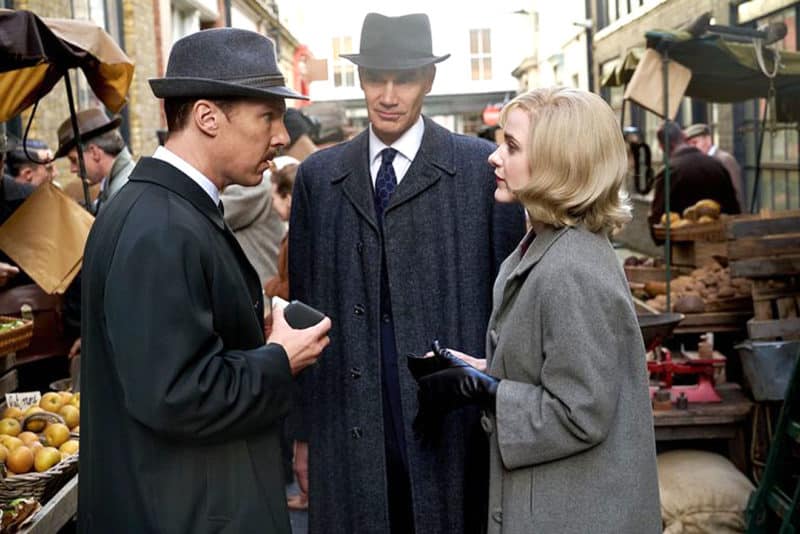Espionage stories, whether fact or fiction, have been a cinema staple since its earliest days. The first flowering was in the 1930s, followed by World War II, when deep cover and double agents exposed military secrets on both sides.
In the Cold War, Allied intelligence services ramped up their activities as it became clear that the Soviet Union had built a powerful network in the West, passing on secrets about atomic weapons and much else.
By the 1960s, memoirs and novels by practising and former agents had become a valuable source for film-makers. The best were often a mixture of both, exemplified by John le Carré, a pseudonym for David Cornwell, who wrote his first thrillers while still at MI6.
His death in December last year left an unmatched legacy of Cold War spy tales, of which The Spy Who Came in from the Cold (1963) was an instant success. Le Carré’s expertise was recognised when official reports referred to Soviet “moles”, a term he borrowed from the Russians for communist sympathisers inside intelligence agencies.
The most famous was Kim Philby, who, with others, was recruited at Cambridge University in the 1930s. Not all moles were exposed. Red Joan (2018) was based on Melita Norwood, who wasn’t identified until she was in her 80s and retired.
By contrast, the British were unable to penetrate the upper echelons of the Kremlin until the early 1960s, when high-ranking military intelligence officer Oleg Penkovsky sought defection in return for the Soviet Union’s plans to base nuclear missiles in Cuba.
This could not be done through the heavily-monitored British embassy in Moscow. Instead, MI6 and the CIA approached a civilian engineering salesman, Greville Wynne, who agreed to become a go-between while expanding his business. (Le Carré’s The Russia House (1990), starring Sean Connery, has a similar plot.)
Wynne’s arrest in October 1962, and spy-swap release 18 months later, was one of the Cold War’s headline stories. It resulted in several books, including two by Wynne himself, who died in 1990. Penkovsky was summarily executed after his arrest.
This story has resurfaced in The Courier (Roadshow), an old-style, low-key drama originally called Ironbark, starring Benedict Cumberbatch as Wynne and Georgia-born Mirab Ninidze as Penkovsky.
Cumberbatch is a good choice, as he was in another Le Carré adaptation, Tinker Tailor Soldier Spy (2011), and The Imitation Game (2014) as Alan Turing. Rachel Brosnahan (House of Cards, The Marvellous Mrs Maisel) is a persuasive CIA agent, while Jessie Buckley, as Wynne’s wife, has a much-reduced role compared with her star performances in Wild Rose and I’m Thinking of Ending Things.
Tom O’Connor’s original script concentrates on the main characters and their motives, rather than on the wider context. Director Dominic Cooke demonstrated in On Chesil Beach (2018) that he is more interested in the cerebral side of story-telling. The depiction of Nikita Khrushchev as a ranting Soviet leader is one blemish in an otherwise credible production.
Rating: Mature audiences. 112 minutes.
CLIPS
Six Minutes to Midnight
(Transmission)
The southern coast of England holds an endless fascination for film-makers, specially for traditional period and war dramas. In Summerland, villagers were suspicious of a writer living on her own during World War II. Who would have thought Bexhill-on-Sea in East Sussex was the location of a finishing school for the German elite’s daughters? (The Augusta Victoria College actually ran from 1932-39.) The outbreak of war is imminent, and the Nazis plan a covert operation to fly the girls home. But British intelligence have planted a German-speaking teacher (Eddie Izzard) to foil their scheme and capture potential hostages. Izzard co-wrote the script with director Andy Goddard and Celyn Jones. Though based on fact, the plot has been souped up with enough cloak-and-dagger to satisfy the target audience.
Rating: Mature audiences. 100 minutes.
Nobody
(Universal)
Everyman roles in Breaking Bad and Better Call Saul helped push Bob Odenkirk into some meaty big screen parts. So he is ideal as a law-abiding and hassled father, who is the victim of a home invasion. His decision to let the offenders flee leaves him more estranged from his family and his job. An incident on a bus, in which louts harass a young woman, prompts his transformation into a vigilante reminiscent of Charles Bronson’s Death Wish series (from 1974) and its successors Taken and John Wick. The latter’s screenwriter, Derek Kolstad, creates a more empathetic – even comic – character for Odenkirk, who goes on to battle with the local Russian mafia. Unfortunately, there’s a passive part for his wife, played by Connie Neilsen, better known for her action roles in Gladiator, and as the Amazon queen Hippolyta in Wonder Woman and Justice League.
Rating: Restricted to audiences over 16. 92 minutes.
Fanny Lye Deliver’d
(Limelight)
The mid-17th century in England unleashed forces under the puritanical rule of Oliver Cromwell that have been largely ignored in the cinema’s fascination with the monarchies that preceded and followed it. The title refers to events in 1657 when Shropshire farmer’s wife Fanny Lye (Maxine Peake) rids herself of an abusive husband (Charles Dance) and a life of drudgery. She also loses her son. The story is as dense as the persistent rural mist, and opens with the appearance of a young couple (Freddie Fox and Tanya Reynolds). They are Ranters, one of many dissenting Christian groups who flourished during Cromwell’s Commonwealth. Like the Quakers and others, they were often hunted for their heresy and threat to society. Against the farmer’s instincts, the couple are given protection because he resents unlawful trespass by their pursuers. Fanny’s deliverance as a proto-feminist emerges from her gradual awakening to the Ranters’ expressions of individual spirituality. This creates tensions that are purged by the violent but satisfying climaxes of classic westerns. An end credit notes that Fanny Lye went on to become a prominent Quaker in America.
Rating: Restricted to audiences over 16. 110 minutes.

Reader Interactions